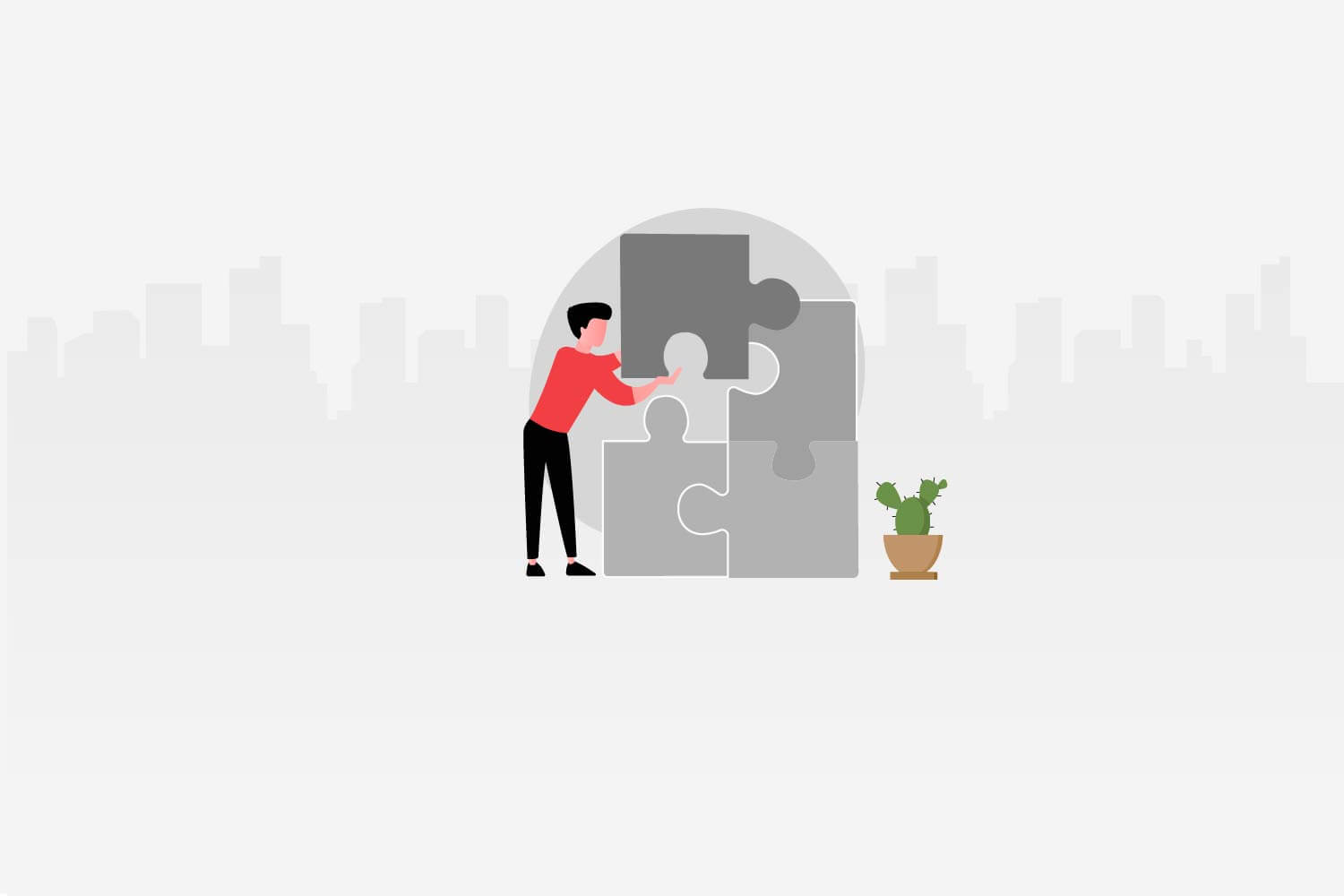In today’s dynamic business landscape, the concept of organizational development programs has emerged as a critical catalyst for fostering growth, adaptability, and success within companies. These programs encompass a range of strategies, initiatives, and cultural shifts that are strategically designed to enhance the overall effectiveness and performance of an organization. From promoting employee engagement and innovation to redefining management structures and fostering inclusive environments, successful organizational development programs have the power to reshape the way businesses operate, collaborate, and excel.
Case studies of companies like Google and General Electric highlight how tailored organizational development programs contributed to their sustained growth. These case studies provide valuable insights into effective strategies.
Throughout the United States, numerous companies have undertaken remarkable journeys in pursuit of successful organizational development programs. By delving into the case studies of these American enterprises, we gain valuable insights into the diverse strategies and approaches that have driven their growth and achievements. From tech giants revolutionizing their work cultures to established companies prioritizing employee empowerment, these case studies offer inspiration and actionable lessons for businesses aiming to embark on their own organizational development journey.
Google’s agile transformation
In the realm of organizational development programs, few stories are as iconic as Google’s transformative journey towards embracing the Agile methodology. The tale of Google’s evolution from a tech startup to a global tech powerhouse is not only a testament to their innovation but also a lesson in adaptability and cultural change.
Google’s transition to Agile marked a shift from traditional hierarchical structures to a more flexible, collaborative, and iterative approach. This transformation was not just about adopting a set of processes; it signaled a profound cultural shift that prioritized open communication, cross-functional collaboration, and rapid innovation. By breaking down silos and fostering a culture where experimentation was encouraged, Google embraced uncertainty and ambiguity as catalysts for growth rather than hindrances.
The impact of Google’s Agile transformation was palpable across various dimensions of the organization. Teams became more responsive to market changes, enabling them to release products faster and refine them based on real-time feedback. This approach not only enhanced customer satisfaction but also empowered employees to take ownership of their work and contribute meaningfully to the company’s vision. Additionally, the emphasis on transparency and continuous improvement fostered a sense of collective responsibility and accountability.
The journey wasn’t without its challenges. Adapting an established organization to an Agile mindset required a significant investment in training, cultural alignment, and the reevaluation of established processes. However, Google’s commitment to this transformation, coupled with its ingrained culture of innovation, enabled the company to thrive in an ever-evolving tech landscape.
The case of Google’s Agile transformation serves as a source of inspiration for organizations worldwide, highlighting the power of embracing change, fostering collaboration, and prioritizing adaptability in the pursuit of organizational development. It underscores the notion that a successful organizational development program isn’t just about implementing methodologies; it’s about cultivating a mindset that drives continuous growth and innovation.
Zappos’ holacracy implementation

Zappos, the renowned online shoe and clothing retailer, embarked on a groundbreaking journey of organizational development by implementing the Holacracy framework. This move aimed to redefine traditional hierarchical structures and empower employees at all levels to contribute to the company’s success.
Zappos’ adoption of Holacracy signaled a departure from the conventional top-down management model. Instead, it distributed decision-making authority and accountability across self-organizing teams. This shift was aimed at enhancing agility, promoting innovation, and fostering a culture of autonomy and entrepreneurship.
Holacracy’s implementation was not without challenges. The framework required a fundamental shift in how employees perceived their roles and responsibilities. Employees had to adapt to a dynamic environment where decision-making was decentralized, and authority was distributed based on specific roles rather than titles. This transition necessitated extensive training, coaching, and continuous communication to ensure alignment with the new structure.
The impact of Zappos’ Holacracy adoption was notable. It empowered employees to take ownership of their work and engage in meaningful ways, driving creativity and innovation. The flatter structure facilitated faster decision-making, enabling the company to respond swiftly to market changes. However, the transition also led to a period of adjustment, as individuals navigated the nuances of the new system.
Zappos’ journey into Holacracy is a testament to the potential of organizational development programs to revolutionize workplace dynamics. It showcases how a non-traditional approach to management can foster employee engagement, unleash untapped potential, and promote a culture of experimentation and collaboration. The Zappos case serves as a beacon for organizations considering innovative organizational models to adapt to the demands of the modern business landscape.
Netflix’s freedom & responsibility culture
Netflix, a global entertainment powerhouse, has gained recognition not only for its content but also for its distinctive organizational culture built around the concept of “Freedom & Responsibility.” This unique approach to organizational development has redefined traditional notions of management and employee autonomy.
At the core of Netflix’s culture is the belief that employees should be treated as responsible adults capable of making informed decisions. This philosophy fosters an environment where individuals have the freedom to innovate, take risks, and make decisions without bureaucratic constraints. The result is a culture that thrives on agility, adaptability, and a commitment to delivering excellence.
Netflix’s approach to organizational development is built upon a foundation of trust and accountability. While employees enjoy the freedom to take ownership of their work, they are also held accountable for their decisions and outcomes. This balance empowers individuals to be proactive problem solvers and encourages a continuous pursuit of improvement.
This culture of “Freedom & Responsibility” has had a profound impact on Netflix’s success. It has fueled a culture of creativity, enabling the company to develop groundbreaking content and adapt to ever-changing market demands. Additionally, it attracts top talent who value autonomy and seek an environment where their contributions are truly valued.
However, implementing such a culture requires careful considerations and a strong commitment from leadership. Netflix’s model might not be suitable for every organization, and adapting elements of this approach may require a thoughtful and gradual transition.
Netflix’s journey into the “Freedom & Responsibility” culture stands as a lesson in how innovative organizational development programs can lead to a transformative culture that fosters creativity, accountability, and adaptability. It encourages companies to challenge conventional norms and explore new avenues for empowering employees to excel in a rapidly changing business landscape.
Southwest airlines’ employee empowerment
Southwest Airlines has long been celebrated not only for its exceptional customer service but also for its distinctive organizational development strategy centered around employee empowerment. The airline’s approach has demonstrated how investing in employee well-being and engagement can yield remarkable results in customer satisfaction and business success.
At the heart of Southwest’s organizational development program is the recognition that engaged and satisfied employees are more likely to go the extra mile to deliver exceptional service. The company’s commitment to its employees starts with a supportive work environment, competitive compensation, and opportunities for career growth. This approach not only attracts top talent but also retains dedicated employees who are invested in the airline’s success.
Southwest’s unique approach to employee empowerment is evident in its collaborative decision-making processes. The airline encourages open communication and involves employees in shaping the company’s policies and practices. This approach not only leads to a sense of ownership and pride among employees but also enables the organization to make well-informed decisions that resonate with its workforce.
The impact of Southwest’s organizational development efforts is evident in its consistently high customer satisfaction ratings and strong financial performance. Employees who feel valued and empowered are more likely to provide exceptional service, leading to loyal customers and repeat business. This positive cycle has helped Southwest maintain a competitive edge in a challenging industry.
The Southwest Airlines case study serves as a powerful reminder that employee empowerment is not just a feel-good strategy; it’s a critical driver of business success. By prioritizing the well-being, growth, and engagement of its workforce, Southwest has demonstrated that organizational development programs centered around employee empowerment can lead to sustainable growth, customer loyalty, and a positive corporate reputation.
Amazon’s leadership principles

Amazon, the e-commerce and tech giant, has become synonymous with innovation and customer-centricity. Central to its success is the company’s set of guiding principles that drive its organizational development efforts. These principles, known as Amazon’s Leadership Principles, form the foundation of its culture and decision-making processes, demonstrating the transformative power of a well-defined value system.
Amazon’s Leadership Principles are not mere slogans; they are deeply ingrained in the company’s DNA. These principles, which include customer obsession, ownership, innovation, and long-term thinking, influence every aspect of Amazon’s operations. They guide how employees collaborate, how products are developed, and how customer experiences are shaped.
These principles serve as more than just a moral compass; they enable Amazon to maintain a consistent approach to business across diverse departments and initiatives. The Leadership Principles encourage employees to think creatively, take ownership of their work, and prioritize the needs of the customer above all else. This not only fosters a culture of excellence but also contributes to Amazon’s reputation for delivering products and services that resonate with consumers.
The impact of Amazon’s Leadership Principles is evident in the company’s growth and market dominance. By adhering to these principles, Amazon has been able to navigate complex challenges, maintain innovation at scale, and remain customer-centric despite its size.
The Amazon case study underscores the significance of a strong value system in organizational development. While Leadership Principles might not be directly replicable for all companies, the lesson here is that a well-defined set of core values can serve as a unifying force, guiding decision-making, fostering innovation, and driving success. Amazon’s journey reinforces the idea that organizational development goes beyond processes; it involves cultivating a culture rooted in meaningful principles.
Apple’s Design-Centered culture
Apple, a global tech leader known for its iconic products, has demonstrated how a design-centered approach can drive organizational development and innovation. The company’s emphasis on design thinking has not only shaped its products but has also transformed its internal culture, providing valuable insights into the power of a user-centric approach.
Apple’s organizational development journey revolves around the integration of design thinking into its processes. This approach places the user at the heart of product development, emphasizing empathy, creativity, and iterative problem-solving. Apple’s commitment to design is reflected in its sleek and functional products, which have set new standards in user experience.
Apple’s design-centered culture encourages cross-functional collaboration, bringing together designers, engineers, and marketers to work cohesively towards a common goal. This collaborative ethos ensures that design considerations permeate every stage of product development, from conception to launch.
The impact of Apple’s design-centered approach extends beyond aesthetics. By prioritizing user needs and experiences, the company has built a fiercely loyal customer base and garnered brand recognition that is unparalleled in the tech industry. This approach has enabled Apple to stand out in a crowded market, with products that not only meet user expectations but often exceed them.
Apple’s journey teaches us that organizational development isn’t solely about restructuring; it’s about infusing a clear philosophy into the company’s DNA. By fostering a culture that places design and user-centered thinking at the forefront, Apple showcases how organizational development programs can drive innovation, enhance user satisfaction, and establish a distinctive brand identity. The Apple case study serves as a reminder that customer-centricity is not just a buzzword; it’s a powerful strategy that can revolutionize how organizations operate and succeed.
IBM’s continuous learning initiatives
IBM, a global technology and consulting company, has long been a proponent of continuous learning as a core component of its organizational development strategy. The company’s commitment to nurturing a culture of learning has not only empowered its workforce but has also positioned it as a leader in the ever-evolving tech landscape.
IBM’s organizational development journey is marked by its relentless focus on upskilling and reskilling its employees. Recognizing the rapid pace of technological change, the company invests significantly in learning programs that enable employees to adapt and thrive in an environment characterized by constant innovation.
IBM’s continuous learning initiatives take various forms, including online courses, workshops, mentorship programs, and collaborative projects. These opportunities not only help employees stay abreast of industry trends but also encourage a growth mindset that fosters adaptability and problem-solving skills.
The impact of IBM’s commitment to continuous learning is multi-fold. By equipping its workforce with the skills needed for emerging technologies, the company remains competitive and can better address the evolving needs of its clients. Moreover, employees who are engaged in ongoing learning are more likely to be motivated, satisfied, and loyal, resulting in reduced turnover and enhanced productivity.
The IBM case study underscores the significance of viewing organizational development as an ongoing journey rather than a destination. By embracing continuous learning, companies can future-proof their workforce, drive innovation, and create an environment where employees are motivated to learn, grow, and contribute to the organization’s success. IBM’s story serves as an inspiration for organizations seeking to embrace the transformative power of lifelong learning as a central pillar of their organizational development strategy.
Microsoft’s diversity and inclusion efforts
Microsoft, a global technology giant, has emerged as a pioneer in promoting diversity and inclusion as integral components of its organizational development strategy. The company’s dedication to fostering an inclusive environment not only reflects its values but also demonstrates the profound impact such efforts can have on innovation, employee engagement, and business success.
Microsoft’s organizational development journey is characterized by its steadfast commitment to creating a diverse workforce and an inclusive workplace. The company recognizes that diverse teams bring together a range of perspectives, experiences, and ideas, which are essential for driving creativity and addressing complex challenges.
Microsoft’s diversity and inclusion initiatives encompass a wide range of strategies, from recruitment and hiring practices that prioritize diversity, to employee resource groups that celebrate various identities and foster a sense of belonging. Moreover, the company’s leadership is actively engaged in promoting a culture of respect and understanding that values individual differences.
The impact of Microsoft’s diversity and inclusion efforts is evident in its reputation as an employer of choice for a diverse talent pool. By nurturing an environment where individuals feel valued and respected regardless of their backgrounds, the company has created a conducive atmosphere for collaboration and innovation. This approach not only leads to more innovative solutions but also better reflects the diverse customer base Microsoft serves.
The Microsoft case study illuminates the importance of weaving diversity and inclusion into the fabric of organizational development. It underscores that successful diversity and inclusion efforts are not isolated initiatives; they require a comprehensive strategy that influences company culture, recruitment practices, and leadership behavior. Microsoft’s journey serves as a beacon for organizations seeking to embrace the transformative potential of diversity and inclusion as key drivers of their organizational development programs.
Conclusion
The realm of organizational development programs stands as a testament to the ever-evolving nature of business management. The case studies examined in this exploration of successful American companies underscore the fact that there is no one-size-fits-all approach to achieving organizational excellence. Instead, these stories highlight the importance of adaptation, innovation, and a deep commitment to fostering positive change.
As companies across industries continue to face unprecedented challenges and opportunities, the role of effective organizational development programs has never been more crucial. By embracing the lessons learned from these case studies and tailoring strategies to their own unique contexts, organizations can pave the way for enhanced productivity, employee satisfaction, and sustainable growth. The journey towards successful organizational development is not only a path to success but a commitment to continuous evolution, enabling companies to thrive in an ever-changing world.
Testlify offers a range of assessments and challenges that allow you to gauge candidates’ knowledge, problem-solving skills, and creativity in real-world scenarios. With our extensive test library, you can objectively evaluate candidates’ abilities, ensuring you shortlist the most talented individuals efficiently. Ready to unlock the potential of your hiring process with our talent assessment tool? Book a free 30-minute live demo with Testlify. Our expert team will guide you through the platform, showcasing relevant skill tests tailored to your organization’s needs. With our support, you can streamline candidate selection, saving valuable time and resources.








